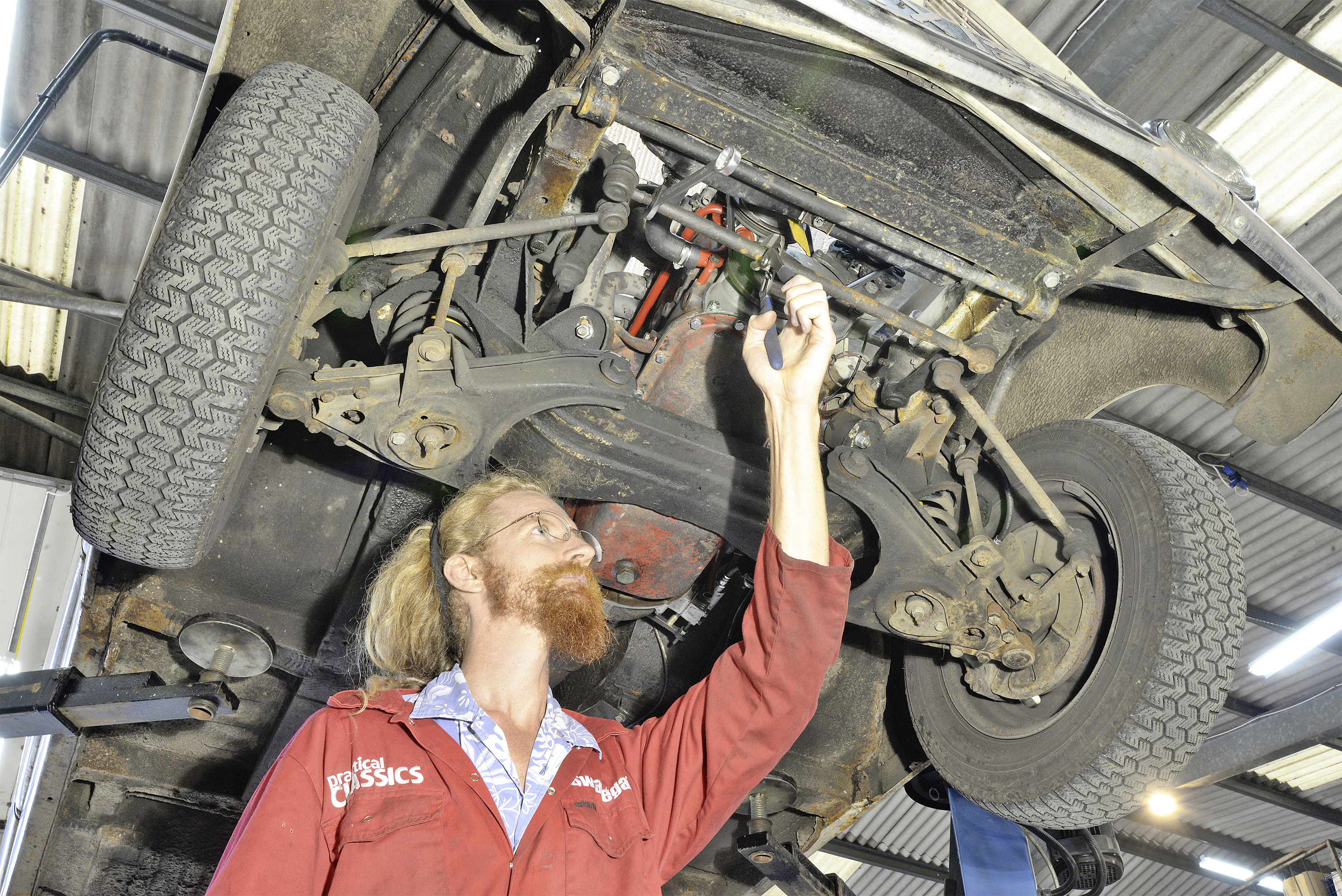 Old, balding or incorrect tyres can make for heavy steering on a classic car – and correct pressures are important too. Note that radials are usually inflated by about 3-5psi more than crossplies. Beware of over-inflating tyres for lighter steering – this will lead to a lack of grip. Never exceed the figure given for high-speed cruising in your manual.
Old, balding or incorrect tyres can make for heavy steering on a classic car – and correct pressures are important too. Note that radials are usually inflated by about 3-5psi more than crossplies. Beware of over-inflating tyres for lighter steering – this will lead to a lack of grip. Never exceed the figure given for high-speed cruising in your manual.
Next, examine the steering mechanism. Start by removing the steering rods completely. Examine them for split rubber boots, water ingress and rusty sludge where grease should be. Balljoints should be stiff and tight, but should move smoothly. While the rods are off, see how easy it is to swivel the hubs while in the air. If these are stiff, look at the suspension swivel joints, balljoints or kingpins. Check the steering box oil level and make sure you can move its Pitman arm smoothly from lock-to-lock without binding. You should feel very slight tightness when the arm goes over its dead-centre position. There should be no play in this position – but play increases either side of the centre by design.
At the other side, give the steering idler a rare bit of attention. Release the top nut and push the shaft out. Inspect for corrosion and worn bushes. Clean, lubricate and put back together. Set the top nut with just enough tension that the idler’s Pitman arm can just be moved with the light pressure of one finger.
Also make sure the steering wheel moves freely. On older cars with rigid steering columns, the column must be in perfect alignment with the steering box. You can shift the bracket that holds the column to the dash. If there’s no adjustment left, then add a spacing shim under the steering box to angle it slightly. A millimeter at the box will translate to a 5mm or more at the top of the column.
When these operations are complete, reassemble and set the toe-in (‘tracking’). We recommend investing in a DIY tracking gauge and doing this yourself, rather than delegating it to a tyre bay. The gauge will soon pay for itself.
If everything’s moving freely and the tracking is correct, you should notice that the steering self-centres without effort at higher speeds and doesn’t need constant correction. It should hold a straight line over rough surfaces, too. If the steering becomes heavy when turning into a sharp bend at speed and seems to weight up the more you turn in, this relates to the camber and castor of the front suspension. Start by looking for bent suspension arms and poor accident repairs. Replace worn-out bushes, which will allow the geometry to alter as they sag.
Castor and camber are not adjustable on some classic cars, so it’s likely to be broadly correct. If they are adjustable, it may have been badly set-up in the first place or fiddled around with since.
Share tips, start a discussion or ask other students a question. If you have a question for the instructor, please click here.
Already a member? Sign in
No Responses to “How to Correct Heavy Steering”